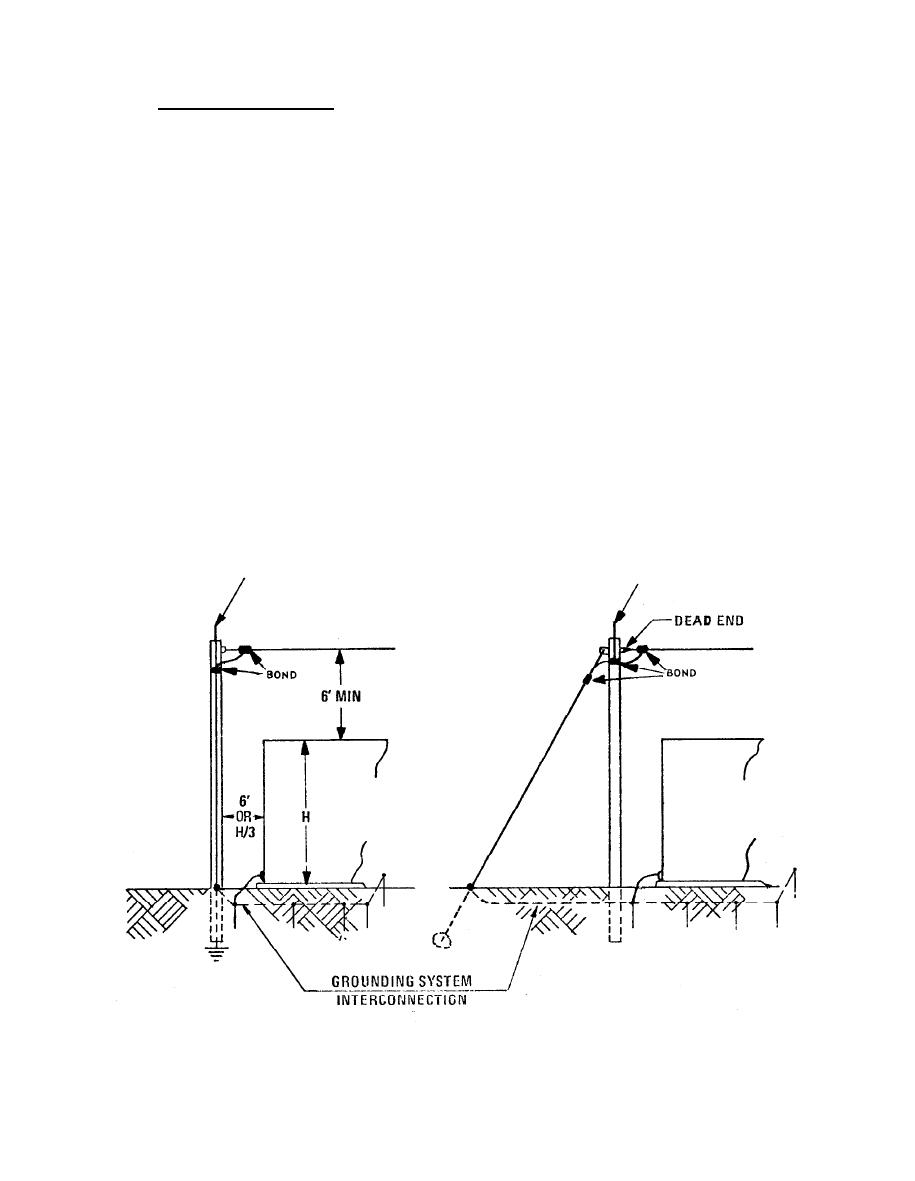

Custom Search
|
|

|
||
 MIL-HDBK-419A
1.3.3.2 Overhead Ground Wire Type.
If the poles are of a nonconducting material, an air terminal shall be securely mounted on the top of
a.
each pole, extending not less than 0.45 meters (1.5 feet) above the top of the pole. Down conductors are run
down the side of the pole or the guy wire may be employed as the conductor as shown in Figure 1-25. If the guy
wire is used, it shall meet the requirements of paragraph 1.3.2.2 and both this wire and the overhead ground
wire are dead-ended at the pole. The overhead ground wire and the guy wire shall be interconnected with a
separate cable. Down conductors and guy wires used as down conductors are to be connected to the earth
electrode subsystem of the structure being protected. Guy wires not located near existing earth electrode
subsystems shall be grounded either to their respective ground anchor (by use of an interconnecting cable) or to
a separate ground rod.
The height of the poles should be sufficient to provide a clearance of not less than 1.8 meters (6
b.
feet) between the overhead ground wire and the highest projection on the building. When the overhead ground
wire system is used to protect stacks or vents which emit explosive dusts, vapors, or gases under forced draft,
the cable is installed so that it has a clearance of at least 4.5 meters (15 feet) above the object receiving
protection.
With either the mast type or the overhead ground wire type of system, the pole is placed at a
C.
distance from the structure that is at least one-third the height of the structure, but in no instance less than 1.8
meters (6 feet). Figure l-25 refers.
AIR TERMINAL
AIR TERMINAL
Figure 1-25. Overhead Ground Wire Lightning Protection System
1-41
|
 |
|
 |
||